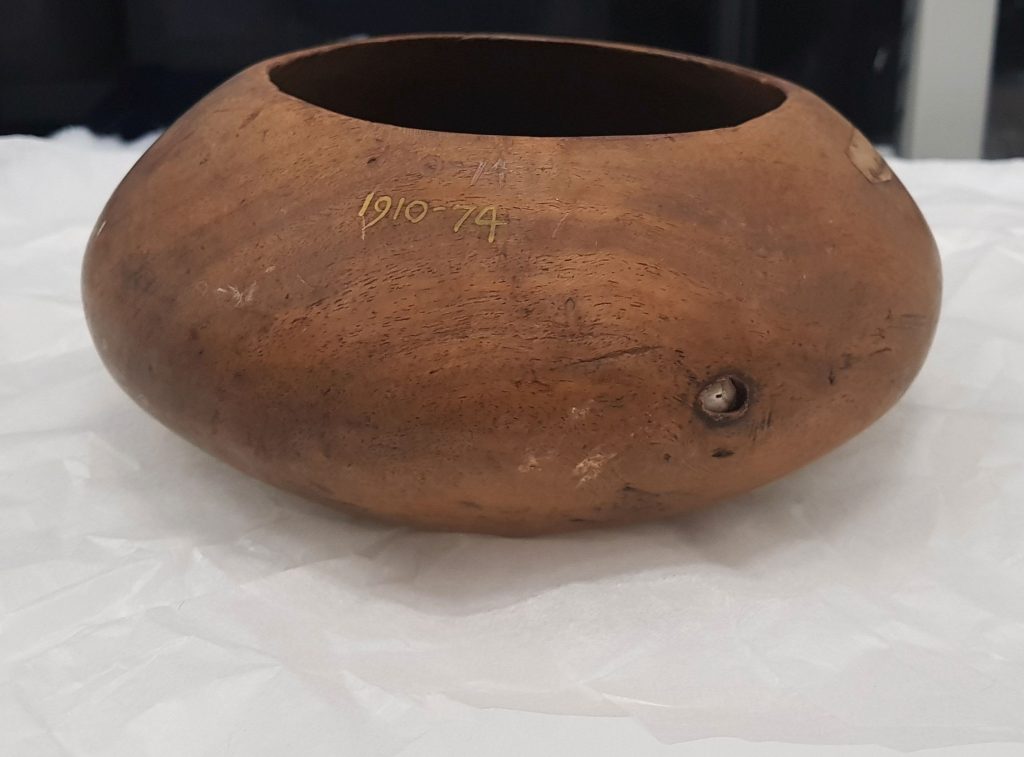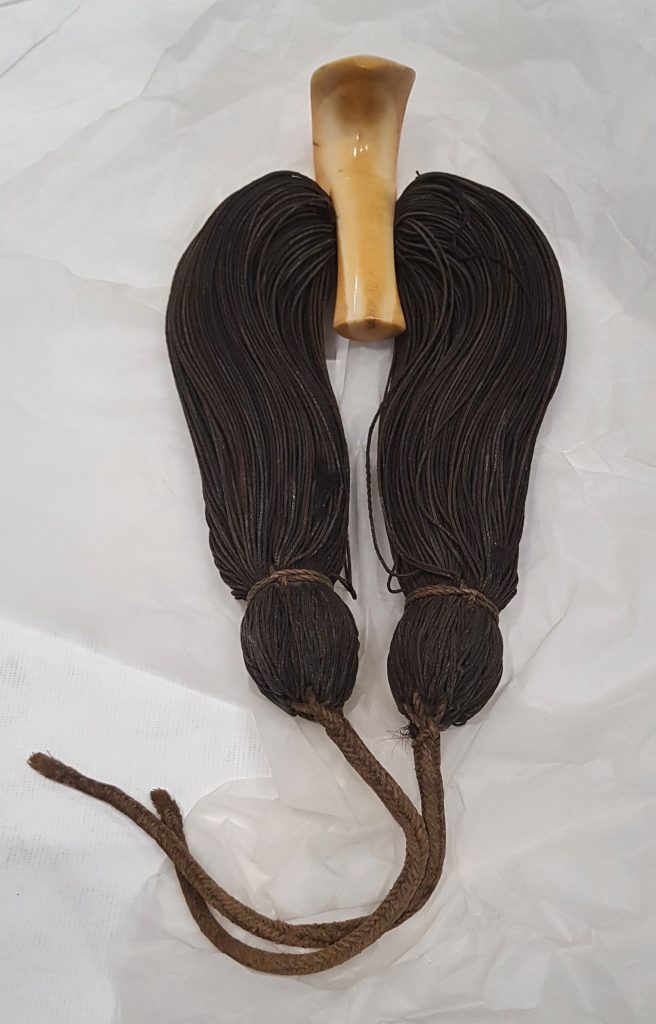Northern Ireland museum returns ancestral Hawaiian remains taken from burial caves in 1840
Following extensive research, it is believed that Gordon Augustus Thomson removed iwi kūpuna (ancestral Hawaiian human remains) from burial cases during his travels to Hawaiʻi island in 1840, and donated these iwi kūpuna to the Belfast Natural History and Philosophical Society in 1857.
The material was included in a 1910 donation to the Belfast Museum and Art Gallery, a precursor to National Museums Northern Ireland.
Now, more than a century later, the remains have been returned to Hawaiʻi. During a repatriation ceremony earlier this month at Ulster Museum in Belfast, the National Museums Northern Ireland handed to Hawaiian representatives iwi kūpuna and five mea makamae pili aliʻi (treasures associated with chiefs), which were part of the museum’s World Cultures Collection.
The private ceremony was followed by a public ceremony at Ulster Museum, which was attended by Hawaiian representatives, museum personnel and delegates from the United States Embassy.
“The return of the iwi kūpuna and mea makamae pili aliʻi to this delegation of Native Hawaiians, so that they may be returned home to Hawaiʻi, is an act of compassion and understanding that is much needed and long overdue,” said Carmen “Hulu” Lindsey, board chair of the Office of Hawaiian Affairs.
The national museums chief executive Kathryn Thomson said: “National Museums Northern Ireland believes it has legal and ethical responsibilities to redress the injustices shown to Native Hawaiian cultural values and traditions, and so through ongoing dialogue, it was agreed that these iwi kūpuna and mea makamae pili aliʻi should be returned by repatriation to the Native Hawaiians. …
“We are re-evaluating our World Cultures Collection on an ongoing basis, to better understand the complex global stories of some 4,500 items – and how and why they came to be in Belfast. We understand and respect cultural values and are in ongoing liaison with source communities and their representatives to establish if items within the collection can and should be returned to their ancestral homes. We remain open to further repatriations as these engagements develop.”
The return of the iwi kūpuna and mea makamae pili aliʻi has great significance on a cultural level for the people of Hawaiʻi. The five mea makamae pili aliʻi are considered sacred by Native Hawaiians and incorporate either human hair, bone or teeth.
The use of human remains was done purposefully and with meaning to infuse objects with mana, spiritual power. The lei niho palaoa, whale-tooth necklaces, were traditionally provided to aliʻi (chiefs) and displayed around the neck to show a connection between the chiefly class and akua (gods). The bracelet and fan intertwined with human hair were reserved for aliʻi and used only during ceremonies rather than for everyday use.
In modern times, Hawaiian leaders and cultural practitioners still revere the use of such objects and typically only adorn or use them during ceremony. The fan, in particular, is one of a very few early 19th century styles not typically available to Native Hawaiians today for ceremony, due to their rarity.
On the same trip, the Hawaiian delegation also repatriated an iwi poʻo (skull) from Surgeons’ Hall Museums in Edinburgh, and engaged in repatriation consultations in London. The iwi kūpuna will be reburied on Molokaʻi and Hawaiʻi Island from which they were taken. The five mea makamae pili aliʻi will be properly stewarded by the Office of Hawaiian Affairs.

















